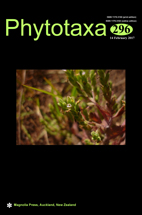Abstract
Surveying of the species throughout Thailand revealed 13 identified and one unidentified species including D. aurea, D. excelsa, D. grandifolia, D. hookeri, D. indica, D. obovata, D. ovata, D. parviflora, D. pentagyna, D. philippinensis, D. pulchella, D. reticulata, D. suffruticosa and Dillenia sp. They were phylogenetically examined based on RAPD profiles of 2,290 discrete characters including a monomorphic and 226 polymorphic characteristics. The phylogenetic relationships calculated from theses banding data show that the intraspecific genetic similarity (S) values ranged from 0.990 to 1.000, and the interspecific S values ranged from 0.520 to 0.790. The RAPD method can be effectively used in Dillenia study. However, its quality of unreproducible method, it cannot be reasonable used in any study on specific genes or areas. In additions, sequences from two molecular regions, rbcL gene and psbA-trnH spacer, were analyzed and determined for genetic distances. The rbcL gene sequences were rather ineffective, as all of the paired species displayed no or low genetic distance values. The psbA-trnH spacer sequences were rather effective, with only one pair (D. reticulata and D. parviflora) showing low genetic distance values. The other species pairs indicated rather far genetic distances, ranging from 0.006 (D. parviflora and D. grandifolia) to 0.376 (Dillenia specie and D. indica). Intraspecific genetic distance values ranged from 0–0.003 and 0–0.013 for rbcL and psbA-trnH spacer regions, respectively. Based on the results from both nucleotide variations and DNA fingerprinting, D. grandifolia and D. ovata were distinct Dillenia species.

